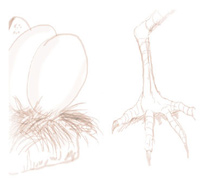Robert W. McKinney
Pandemic Influenza Storybook Stories: 1957 Flu Pandemic
Storyteller: Robert W. McKinney, Ph.D
Location: California

In 1957 I was stationed at the 6th Army Medical Laboratory at Ft. Baker, California as Chief of the Immunology Division. The division provided viral diagnostic services to all military (Army, Navy, Air Force) medical facilities within the area, plus Alaska and Hawaii. At that time, we employed the hemagglutination–inhibition test procedure for influenza diagnosis using four antigens — Type A (PR8), Type A’ (FM1), Type B (Lee) and the isolate for the current year, which in this case we identified as Baker 1 (Type A).
We had recovered the latter strain from an individual stationed at Ft. Baker. We produced these antigens in embryonate chicken eggs. Upon being apprised of the evolving pandemic, we added the pandemic strain which was provided by the CDC. Because of the volume of specimens being submitted, we limited testing to paired specimens; i.e., an acute sample obtained within 5 days of onset and a convalescent sample collected 10 or more days later. Even with this “restriction,” we were testing 20 pairs per day, 6 days per week. To the best of my recollection, we tested approximately 1500+ pairs of which some 60% were positive for the “pandemic strain.”